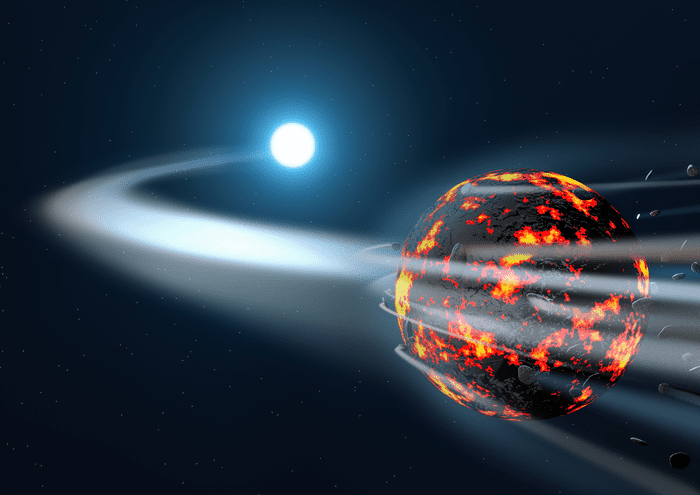It was previously believed that planets form only after a star has reached its final size, but new research published in Nature Astronomy suggests that stars and planets can actually ‘grow up’ together.

A study of some of the oldest stars in the universe suggests that the building blocks of planets such as Jupiter and Saturn can actually form while their host star is still developing. The research, led by the University of Cambridge, modifies our understanding of how planetary systems form — including our own Solar System.
Amy Bonsor, from Cambridge’s Institute of Astronomy and the study’s first author, and her team of international colleagues investigated the building blocks of planet formation by studying the atmospheres of 200 white dwarf stars in an attempt to answer this question.
“We have a pretty good idea of how planets form, but one outstanding question we’ve had is when they form: does planet formation start early, when the parent star is still growing, or millions of years later?” Bonsor asks. Luckily, we have some stellar labs to help us investigate this.
“Some white dwarfs are amazing laboratories because their thin atmospheres are almost like celestial graveyards,” Bonsor adds.
Planetary interiors are typically inaccessible to telescopes due to the planet’s atmosphere. However, there’s a subclass of white dwarfs known as “polluted” systems containing heavy elements such as magnesium, iron, and calcium which can make it easier to see deeper into the planet.
It is believed that these elements originated from small bodies, such as asteroids left over from planet formation, that crashed into white dwarfs and burned up in their atmospheres. Consequently, spectroscopic observations of polluted white dwarfs can probe the interiors of these shattered asteroids, providing astronomers with direct insight into their formation.
Building planets
Planet formation begins in a protoplanetary disc composed primarily of hydrogen, helium, and tiny ice and dust particles that orbit a young star. The current leading theory on how planets form has dust particles adhering to one another, forming larger and larger solid bodies over time. Some of these larger bodies will continue to accrete, becoming planets, while others, such as those that collided with white dwarfs in the current study, will remain asteroids.
“Our study complements a growing consensus in the field that planet formation got going early, with the first bodies forming concurrently with the star,” Bonsor said. “Analyses of polluted white dwarfs tell us that this radioactive melting process is a potentially ubiquitous mechanism affecting the formation of all extrasolar planets.”
According to the researchers’ spectroscopic-observation analysis, the mixture of elements observed in the atmospheres of these white dwarfs can only be explained if a large number of the original asteroids melted, causing heavy iron to sink to the core while lighter elements floated on the surface. This process, known as differentiation, is responsible for the iron-rich core of the Earth.
“The cause of the melting can only be attributed to very short-lived radioactive elements, which existed in the earliest stages of the planetary system but decay away in just a million years,” Bonsor said. “In other words, if these asteroids were melted by something which only exists for a very brief time at the dawn of the planetary system, then the process of planet formation must kick off very quickly.”
Jupiter and Saturn had ample time to grow to their current sizes, according to the study, which suggests that the early-formation scenario is likely accurate.
This is just the beginning – every time we find a new white dwarf, we can gather more evidence and learn more about how planets form,” Bonsor said. “We can trace elements like nickel and chromium and say how big an asteroid must have been when it formed its iron core. It’s amazing that we’re able to probe processes like this in exoplanetary systems.”
Researchers from the University of Oxford, the Ludwig-Maximilians-Universität in Munich, the University of Groningen, and the Max Planck Institute for Solar System Research in Gottingen also participated in the study.






